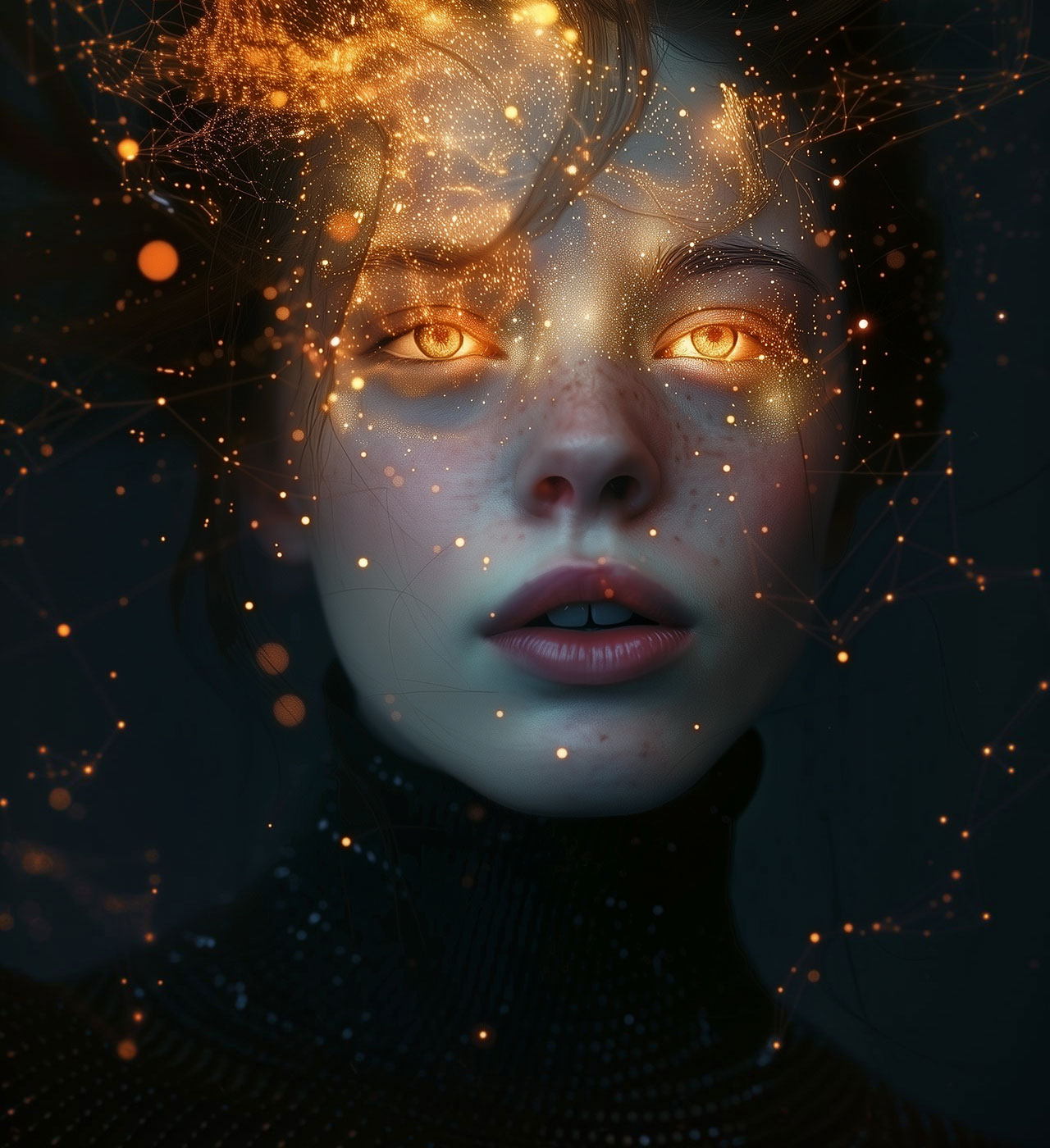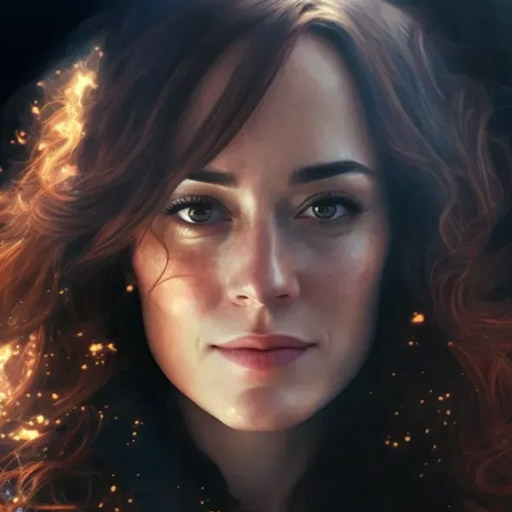Q: Who or what are your biggest artistic influences, both in traditional and AI art?
Sherry Horowitz: “It’s hard to narrow it down. I’ve been a student of the arts since I was a young girl. I’m curious and an avid reader of a wide range of subjects. As a creative kid, sitting at my desk in a passive learning environment for eight hours a day drove me crazy. So, I spent my whole youth drawing through my classes. Because of this I ended up drawing fashion designs for my friend’s mom who was a seamstress. She loved my ideas and would sew them for her customers. I ended up doing fashion design for friends and family. But although I was accepted at Fashion Institute of Technology for a minute, due to life events I ended up switching tracks.
I didn’t enjoy illustration because I found it to be technically tedious, even though I excelled at it. I had ideas faster than I could execute them and this annoyed me. I didn’t enjoy art for art’s sake nor did I have the luxury to pursue that. Because I was a reader,I was also a good writer, and I loved history and literature, but couldn’t afford to go to school for an advanced degree at the time either.
Circumstances meant that I had to channel my art into something more profitable, and I decided to study advertising design. The ideas and psychology that made a brand memorable and powerful really fascinated me more than the technical execution of imagery. Growing up during the latter half of the Golden Age of advertising, during the wild 80’s and 90’s in New York, I was fascinated with the creativity of the industry and I thought it would be a profitable way to channel my creativity.
I was always fascinated with the way language could support an image and make it so much more impactful. Though I always dreamed of working in an advertising agency, when I became a mom, I ended up and working as a graphic designer for several years. This kind of work gave me a wide variety of experience. Working for a toy manufacturing company enabled me to create products and exercise what I loved about branding and aesthetics. I worked on a huge range of projects where I gained experience in packaging and market research for product development.
There was a point after my fourth child that I found an opportunity to work on my writing skills, and on a lark, with the encouragement of my Professor Dan Masterson, I applied, and won, The Joel Oppenheimer scholarship award. This generous gift went to an MFA student whose writing samples demonstrated outstanding literary achievement and exceptional promise. This enabled me to get a Masters degree in Poetry and I spent about seven years steeped in the Poetry/Literary world and publishing my work.
I think there is a particular process in the mind in poetic thinking that really influences why I became proficient with generative A.I. It’s not just that I have possession of a good vocabulary. It’s something more nuanced. It’s more about critical thinking and distillation. Poetry takes large ideas and reduces them into tightly wound lyrical narratives. Like I said, I love the visual arts but I also love articulation of ideas.
Poetry is a craft of philosophical vision delivered via the medium of elevated language. Being part of a very accomplished coterie of writers (Maxine Kumin, Carol Frost, Gerald Stern to name a few) one works on developing a unique style, tone, and voice that is distinct as a body of work. This kind of writing demands rhetorical, conceptual, critical and contextual thinking. It also demands a deep connection to language that supports vision because the best literature always paints an indelible picture in the mind. In fact, I think the best sort of art is driven by ideas, ergo, language is a precursor to vision.
So you can see how the ability to visualize ideas using language is the same kind of skill you would need to access the massive databases of a gen ai model like Midjourney. More than any poem I might have written, it was the training involved in developing my work that taught me to think in macro and expansive ways while also thinking about the granular and nuanced detail that one needs in order to find just the right key word/reference that will unlock the result you want to imagine.”

